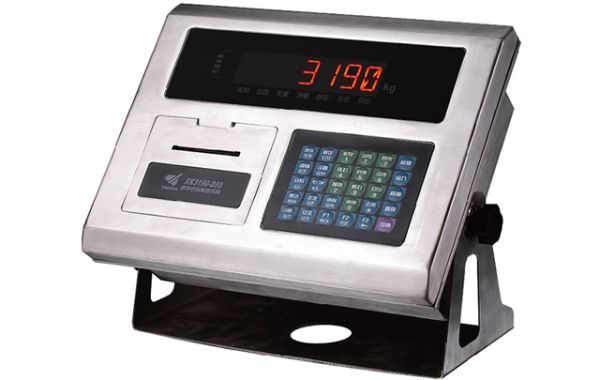The Importance of Accurate Weighing
Precise weight measurement is fundamental to various aspects of logistics and warehouse operations:
Inventory Management: Accurate weight data helps maintain precise inventory levels, preventing stockouts or overstocking.
Shipping and Logistics: Correct weight determination is essential for calculating shipping costs, complying with transportation regulations, and optimizing load distribution.
Cost Control: Accurate weighing helps identify discrepancies in product weight, preventing losses due to underweight shipments or overpaying for freight.
Quality Control: Weight verification can ensure product quality and consistency.
Types of Weighing Display Instruments
Digital Bench Scales: These versatile scales are used for weighing smaller packages and items within a warehouse or shipping department. They offer features like tare function, unit conversion, and data output capabilities.
Floor Scales: Designed for heavier loads, floor scales are ideal for weighing pallets, drums, and other large items. They come in various capacities and configurations to suit different applications.
Platform Scales: Larger than floor scales, platform scales are used for weighing trucks, containers, and bulk materials. They often incorporate advanced features like load cells and digital indicators for precise measurements.
Crane Scales: These specialized scales are used for weighing heavy loads suspended from cranes. They provide real-time weight data for safe and efficient handling of large objects.
Checkweighers: Used for inline weighing and inspection, checkweighers verify product weight and reject underweight or overweight items.
Advanced Weighing Display Instruments
Technology has significantly enhanced weighing display instruments, offering advanced features:
Data Connectivity: Integration with warehouse management systems (WMS) for real-time data transfer.
Wireless Communication: Remote monitoring and control of weighing devices.
Barcode Integration: Efficient product identification and tracking.
Printer Compatibility: Generating weight-related documents for shipping and inventory purposes.
Challenges and Solutions
Environmental Factors: Temperature, humidity, and vibrations can affect weighing accuracy. Calibration and regular maintenance are essential.
Human Error: Weighing errors can occur due to incorrect placement of items or operator mistakes. Implementing standardized procedures and operator training can minimize these errors.
Equipment Breakdown: Downtime of weighing equipment can disrupt operations. Regular maintenance and backup systems can mitigate this risk.
By selecting the appropriate weighing display instruments and implementing best practices, logistics and warehouse operations can achieve greater efficiency, accuracy, and cost-effectiveness.
Would you like to delve deeper into a specific type of weighing display instrument or discuss the impact of weighing accuracy on supply chain management?







